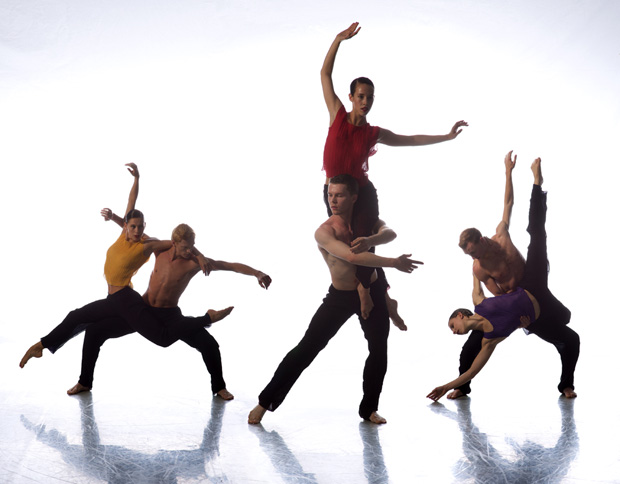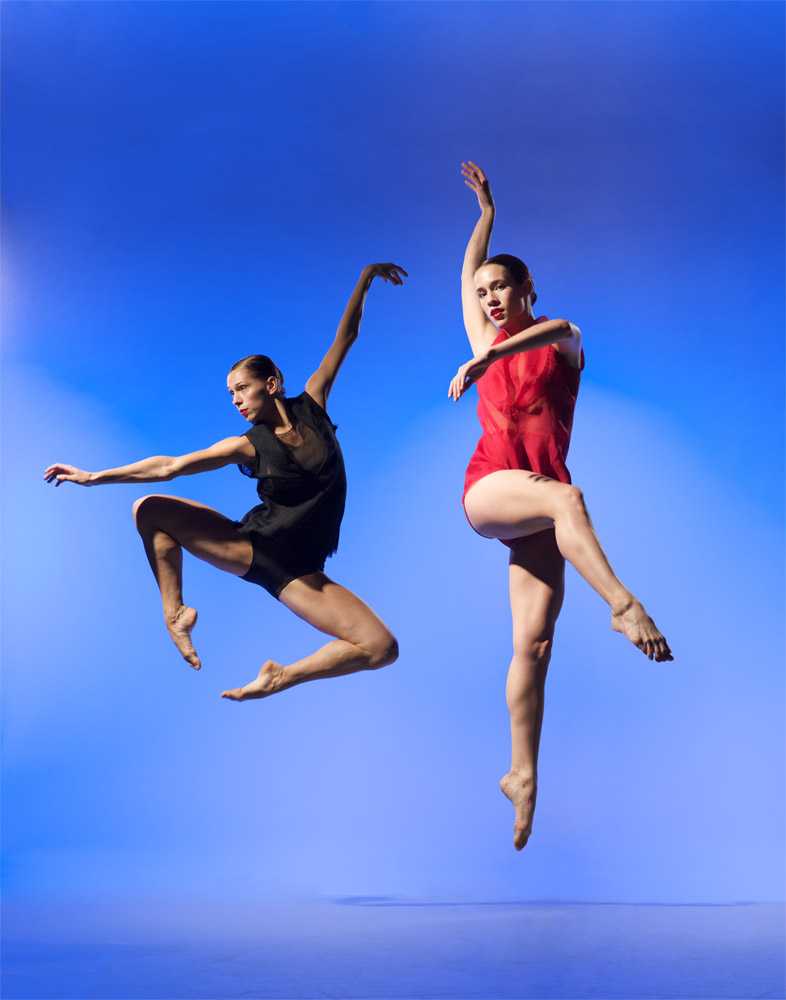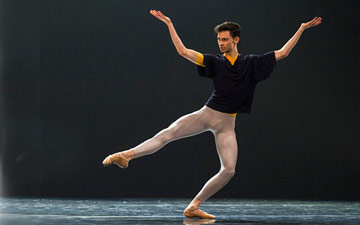
Nederlands Dans Theater 2
Passe-Partout | Gods and Dogs | Cacti
London, Sadler’s Wells
6 March 2012
www.ndt.nl
www.danceconsortium.com – NDT 2 UK Tour
Exactly one week ago, I raved about the simplicity of Richard Alston’s mixed bill on this same stage, where the focus was distilled into the simply alchemy of mixing music and movement. By comparison, eclecticism ran riot in this triple bill of works from those other demi-gods of the contemporary dance world at the Nederlands Dans Theater. Across all three works, the art of set and costume designs, video projections and lighting vied with an almost equal intensity of image-creation with the music and choreography: from the complex, dark and often dour literary allusions of ‘Passe-Partout’; through the strange mix of distorted, yet angular and frequently gorgeous shapes in the shimmering luminescence of ‘Gods and Dogs’; to the fast-paced, new-modernism of ‘Cacti’, a compelling mix of tribal existence out of which spins a humorous sketch of human intimacy. It was all too much to absorb in a single sitting.
This was the NDT2 arm of Nederlands Dans Theater, not a second team but a younger version, with all 16 dancers aged 25 or less (the youngest being 19). None of them remain in this company for more than a three-year term although some (perhaps even several) will graduate into NDT1. The major contributions in dance were noticeably coming from the members in their final year, particularly the silky smooth Astrid Boons, who performed the central role in both ‘Passe-Partout’ and ‘Cacti’; Marne Van Opstal, a brooding presence throughout the opening work; and Spenser Theberge, who was not only the other half of the ‘Cacti’ duet but also received an artistic credit for supplying the lyrics.
‘Passe-Partout’ is the creation of Lightfoot León, the surnames of Paul and Sol who have been the resident choreographers at NDT for a decade. Lightfoot is also now the artistic director (although NDT 2 has its own long-serving artistic boss, Gerald Tibbs). A sinister undercurrent of dark and forbidding images gives this a theme somewhere in the midst of ‘The Woman in Black’, ‘The Turn of the Screw’, almost anything by Ibsen or even ‘Rebecca’ – in fact, any literature about strange activities behind the closed doors of a large house. The stage space is divided into “rooms” by the movement of large fireplace-styled, front-facing constructions, separating characters and action. Severely dressed in black with her hair pulled tightly back in a bun, Boons floated through events like du Maurier’s Mrs Danvers controlling Manderley. But, to keep us wondering, her long black gown covered every part of her body from neck to toe, apart from having a sheer mid-section which rode up to reveal momentary glimpses of her breasts.

Although it is hard to summarise any outcome, there was linearity through ‘Passe-Partout’ and an understanding (rightly or wrongly) that it had an unexplained yet plausible narrative. Both other works in the programme employed sudden shifts of energy, often enabled by significant changes in the theatrical dimensions of scale, lighting or environment. Jiří Kylián’s ‘Gods and Dogs’ multiplies the dancers’ forms in its early section with floor-based spotlights casting a rich variety of shadows against the backdrop; in the closing stages, a major change of pace in the music accompanied a duet against the shimmering patterns of a giant, metallic beaded curtain, ending (as often the case with Kylián’s work) with beautiful artistic tableaux, in which the bodies are sculpted into a three-dimensional framework of light and pattern.
Alexander Ekman (at 26, just senior to the dancers in the NDT 2 troupe) begins ‘Cacti’ with all 16 dancers, made as genderless as possible in flesh-coloured costumes, occupying their own plinth (of varying heights), moving in highly co-ordinated ways but holding poses that suggest the tension of individuals fighting to escape the tribe. Like Antony Gormley’s wooden boxes in ‘Sutra’, the plinths are moveable and stack into a complex, spiky pattern to provide the setting for the Boons/Theberge duet that is danced against a funny voiceover of the dancers’ thoughts. Playing with the idea of dance and its intentions in a deconstructive context, this section bore no obvious connection to the earlier episode on the platforms (bar the presence of the plinths themselves). But then again, there were the sixteen cacti from which the work derived its title; brought on, taken off, tipped over. I have no idea about the intent but who cares anyway, when this organised mayhem demonstrates- in a beaded strand of beautiful images every bit as long as Kylián’s curtains – the elite and dynamic athleticism of this outstanding ensemble.

















You must be logged in to post a comment.